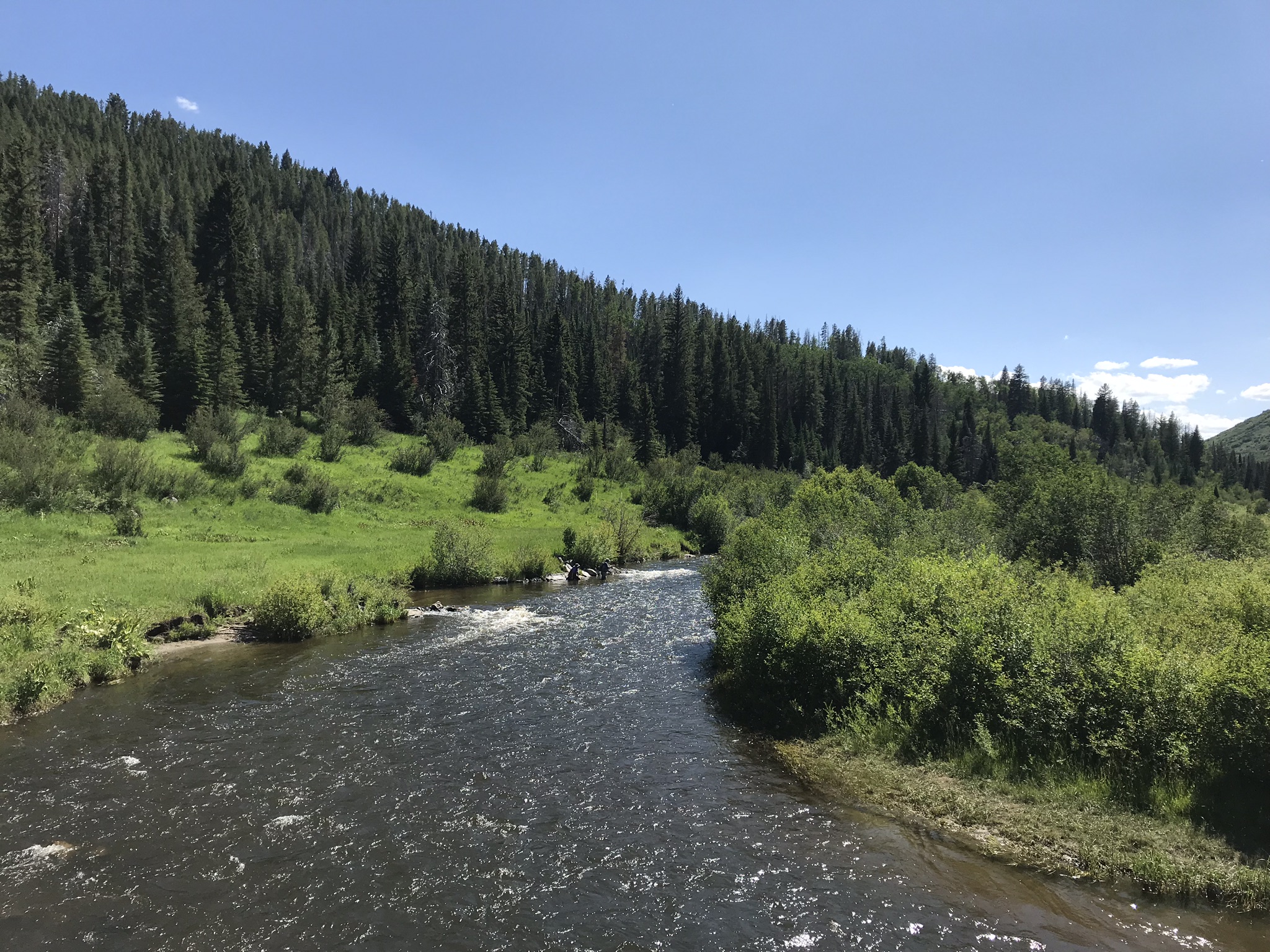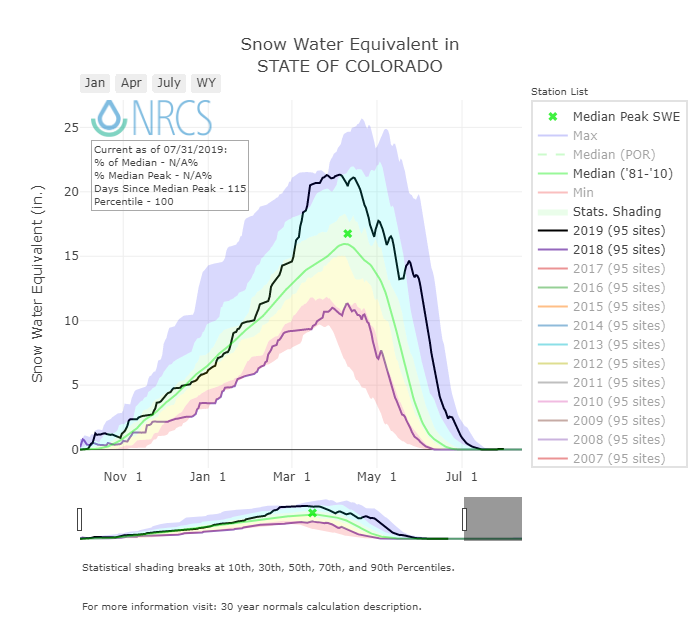At Colorado Water Trust, we restore flow to rivers. We turn ideas into water in streams, and the process can be complex. This blog post is part of a series that gives us the opportunity to dive deeper into how our projects work – giving you a behind the scenes look at how Colorado Water Trust restores flows to rivers in need.
Ever wondered how Colorado Water Trust decides which rivers might need our help each year? Each spring, our team, and especially our Water Resources Engineer, Mickey O’Hara, dives into a streamflow forecasting process to help guide our decision making. For many temporary projects, they can only legally restore flows in three or five out of ten years, so it’s crucial that we correctly identify the years in which those projects will make the biggest difference for streams. While it’s tough to predict what might happen four or five months in the future, we have excellent science to guide us.

When the ski slopes are shutting down for the year in early April, the Water Trust team is hard at work determining where our projects can make the biggest difference in the coming summer. April might seem a bit early considering rivers don’t typically run critically low until July or later, but if water isn’t used to restore flow in a given year, our project partners will continue to use that water for its original use. Partners need to know if they should continue with business as usual or make arrangements to reduce their water use in the coming season.
If we decide we’d like to implement a project in April, that doesn’t mean that it has a 100% chance of operating. If a partner needs to use their water for its original uses and declines to run a project in a given year, that’s their right – these projects are voluntary. If it doesn’t appear that a project will be helpful for a river or stream due to other circumstances, we can decline to run it in a given year. Ultimately, we want to run the projects that will restore the right amount of flow at the right time.
It’s important that we make our calls using the best data available. Mickey watches snowpack numbers and streamflow forecasts through the late winter and spring, and tracks expected runoff conditions throughout the state. He relies on SNOTEL data and streamflow forecasts from the Natural Resources Conservation Service (NRCS), streamflow forecasts from the National Oceanic and Atmospheric Administration’s (NOAA) Colorado River Basin Forecast Center, and numerous other data sources. Forecasts can be compared to previous years’ outcomes to determine which of our projects might be really helpful to a stream.

This brings us to this summer. You may have noticed from our website that we are not currently running any temporary projects. Well, back in April, the snowpack was deep and the forecasts were calling for a good water year – so far, they’ve been right. However, one wet year doesn’t protect rivers in future dry years, and we always need to prepare for the next time our rivers need help. If you want to get more engaged in the Water Trust’s work, or just want to know more about what we do, follow us on Facebook, Twitter, or sign up for our newsletter!
-Article written in collaboration with Colorado Water Trust Staff and Communications Intern Ryan Kistler
